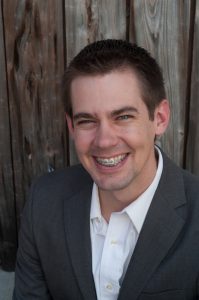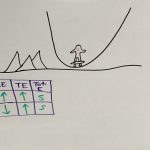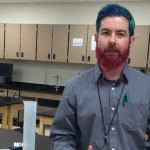Member’s Spotlight April 2017
By John Meyers. November 2015
I took the mechanics Modeling Workshop at Arizona State University (ASU) this last summer. I teach at the South Mountain campus of AAEC Early College High School. We are a Title 1 charter school that serves underprivileged students of the South Phoenix area. Until this year we have never been able to offer a physics course for our students. With a partial tuition scholarship from Salt River Project (SRP), I was able to take the mechanics Modeling Workshop, which gave me the necessary preparation to offer physics for the first time ever at our school.
 So far it has been a great success. I am teaching two full physics courses, in addition to my usual four sections of chemistry. The students are engaging with the physics material in a meaningful manner and enjoying learning physics.
So far it has been a great success. I am teaching two full physics courses, in addition to my usual four sections of chemistry. The students are engaging with the physics material in a meaningful manner and enjoying learning physics.
As the sole provider of a family of 5 (I’m married with three beautiful kids ages 4, 2 and 8 weeks) there is no way I could have afforded taking the Modeling Workshop at ASU without the scholarship I received. I took numerous physics courses in my undergraduate degree program at ASU; however, I did not feel as though I could teach physics in an effective manner. Having taken the chemistry modeling course (in 2012 as an undergraduate, for which I also received a needed tuition scholarship from SRP), I knew that the physics modeling course would help me obtain the skills and know-how to not only teach physics, but teach it using the most effective and well researched methodology out there.
Coming from the Roosevelt school district, most of my students have never taken a science course before they enroll at our school. Traditionally this makes learning things like chemistry and physics extremely difficult for them, since they don’t have the background knowledge and experience in science that most students have. However, since I’ve come here to AAEC, my principal has noted a complete 180 when it comes to our students’ experience with chemistry and now physics. They used to struggle in chemistry, learn to hate it — and the vast majority of students failed the course. Now our students, with my arrival at this school and through using Modeling Instruction, enjoy chemistry and are successful in the course, with the vast majority of students passing the course.
I am seeing the same thing this year in physics. In both classes the students construct their own understanding of science concepts by actually doing science experiments and learning the necessary principles from their results. They engage with each other in whiteboarding sessions and further explore the scientific models and principles through these discussions. They have to work hard to overcome the disadvantage they come in with, but now they have the opportunity to actually succeed, and they are doing it.
Several students who took my chemistry course are now in CHM 151 (general chemistry) at the community college, and all of them are doing extremely well. (We have a relationship with the community college whereby we pay for our students to take college courses while they are still in high school; we end up paying for somewhere between 70% to 80% of our students’ associates degree if they finish it while still in high school.) These students have come back and told me that they find the CHM 151 course easy after taking my class. This is completely different than before I came, when teachers taught traditionally; our students used to really struggle in CHM 151 under our previous instructors. Modeling Instruction is working with my students at my school!
Our school was rated this year by Newsweek magazine as the 82nd best high school in the nation serving low income students and the second best in Arizona. I would like to think that my addition helped with that, since this is the first year we’ve had this rating.


